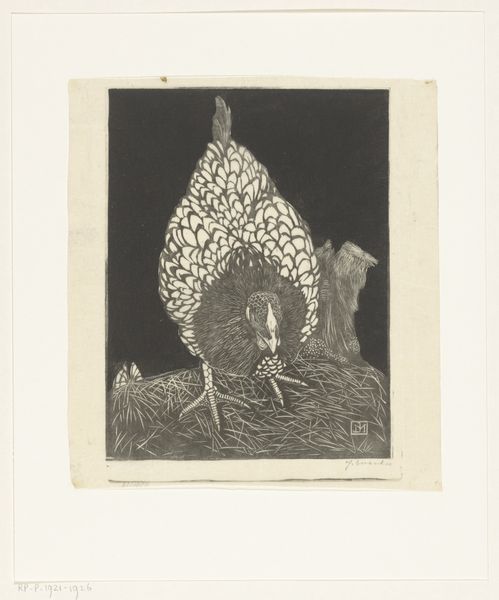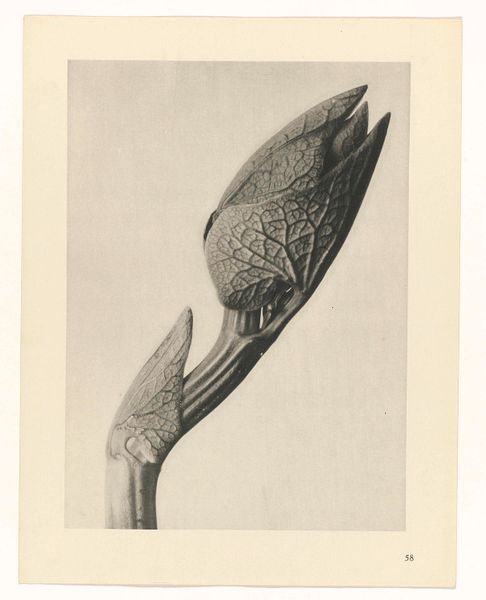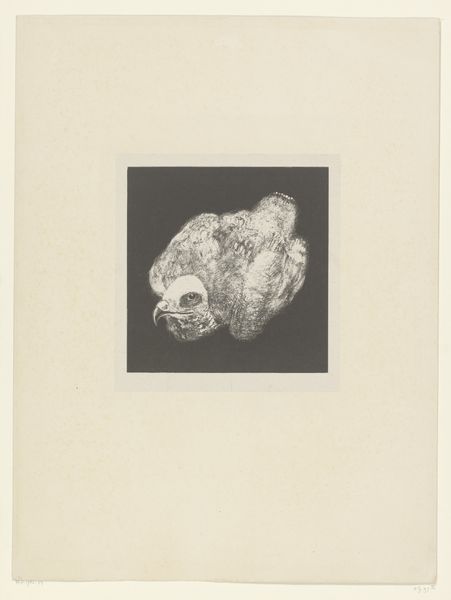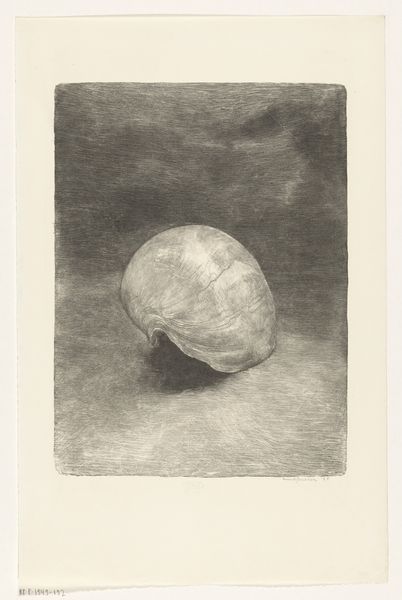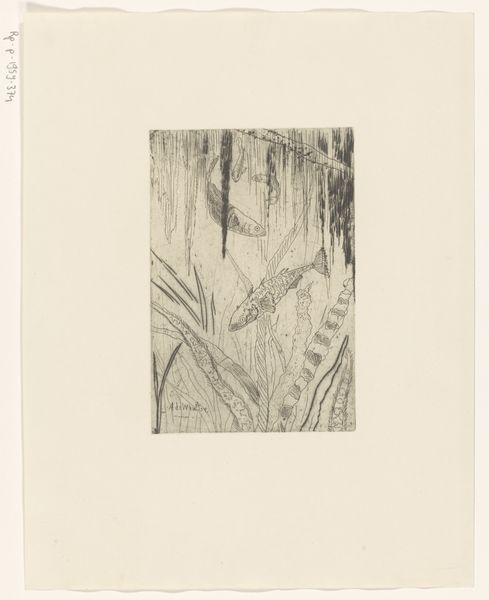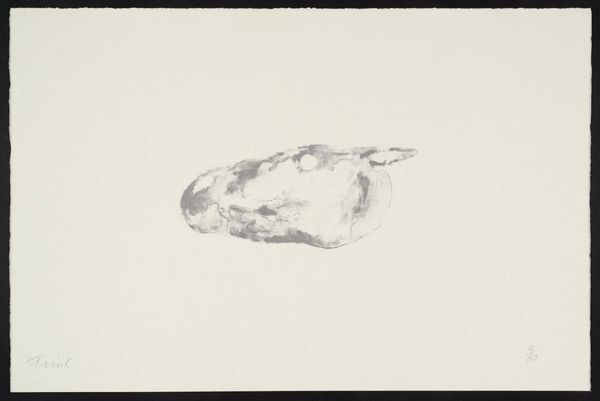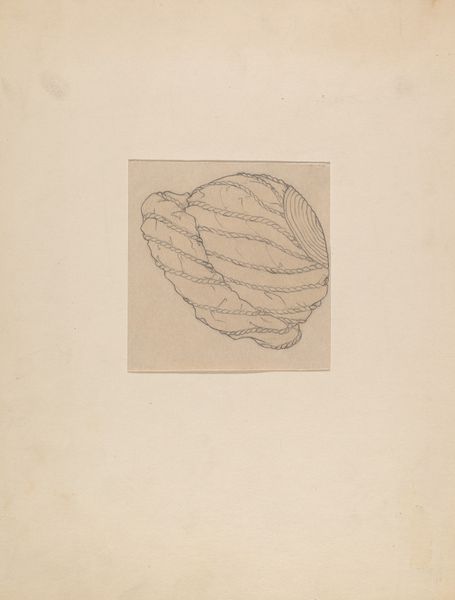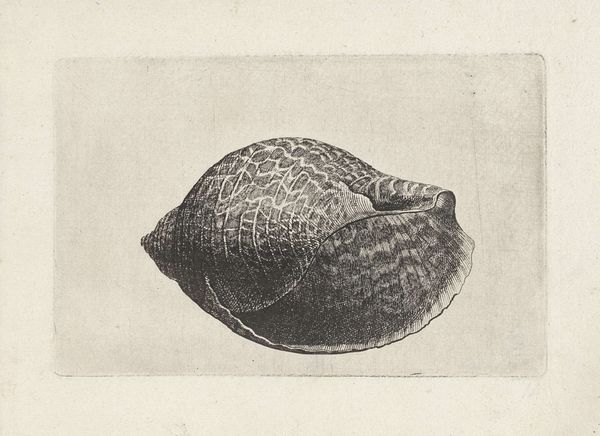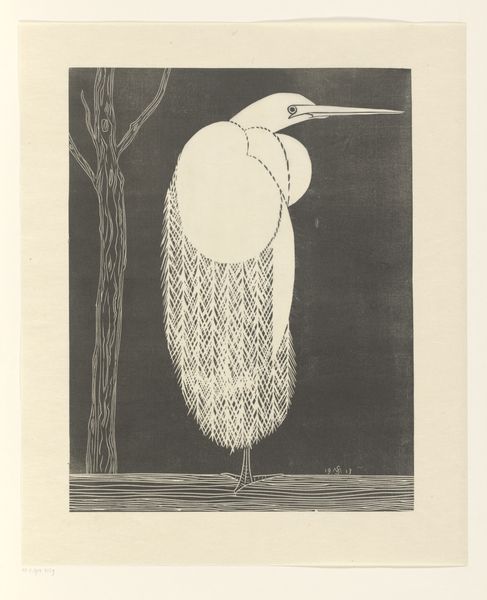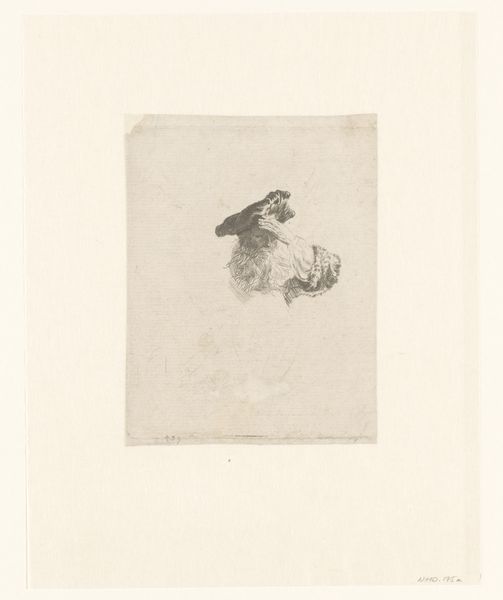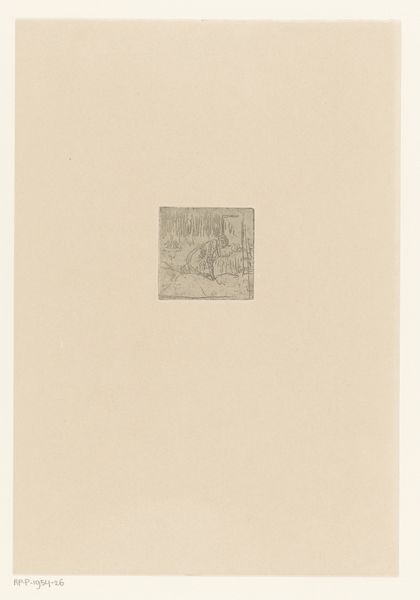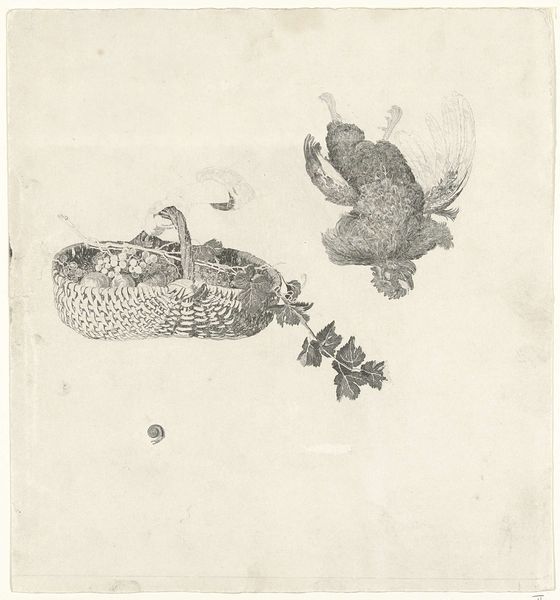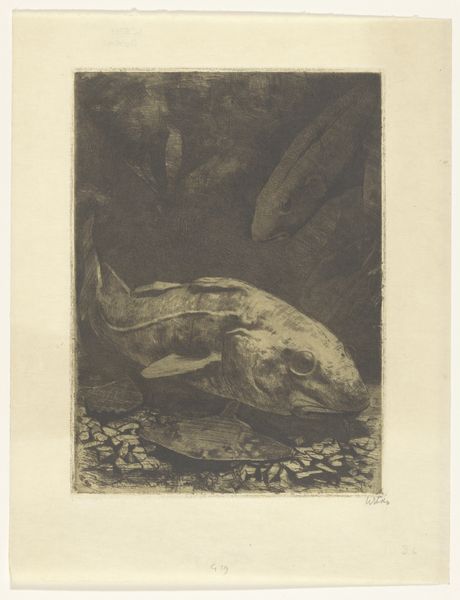
print, woodcut
# print
#
figuration
#
woodcut
Dimensions: height 430 mm, width 334 mm
Copyright: Rijks Museum: Open Domain
Editor: So this is Reijer Stolk's "Eend" from 1942, a woodcut print residing at the Rijksmuseum. It features a duck centered on a green block. The muted color palette gives it a quiet, almost somber mood. What do you see in this piece? Curator: The image presents a cultural palimpsest of both nature and artistic construction. In many cultures, birds carry symbolic weight, often associated with freedom, the soul, or a connection to the divine. This particular depiction—a solitary duck, centered—reminds me of sacrifice. Editor: Sacrifice? In what way? Curator: Consider the setting – a green field. Now, how does that colour impact our experience? What memory might the field hold? Editor: Green, as in nature, evokes concepts such as fertility, nature, life. Maybe there's a sense of that natural vibrancy being offered, or contrasted with death? Curator: Precisely! Now, contemplate the year it was made—1942. Doesn't the duck become a symbol of lost peace and natural beauty during wartime? How does this contextual awareness affect the experience? Editor: Absolutely. It transforms the work into a powerful, poignant memento. It makes you wonder what the artist and the people of the time period were struggling with, given it was made during such an unsettling historical period. Curator: Indeed. By understanding the symbols and historical context, we unearth the deeper emotional and psychological dimensions. Art becomes a doorway into shared human experiences across time. Editor: I agree. I now see how Stolk used accessible symbolism and framing to create a lasting, impactful image, that resonates deeply with universal and contextual memories.
Comments
No comments
Be the first to comment and join the conversation on the ultimate creative platform.
